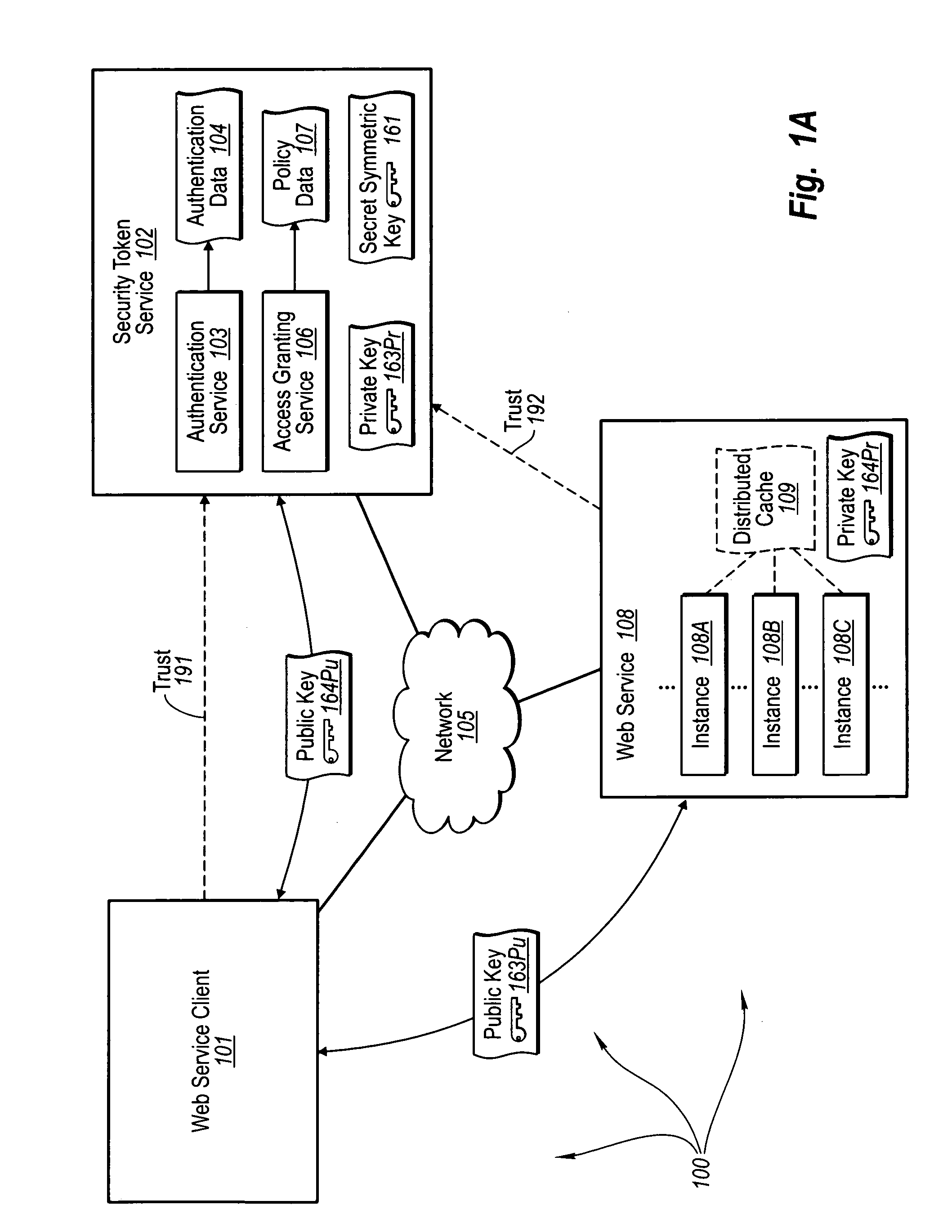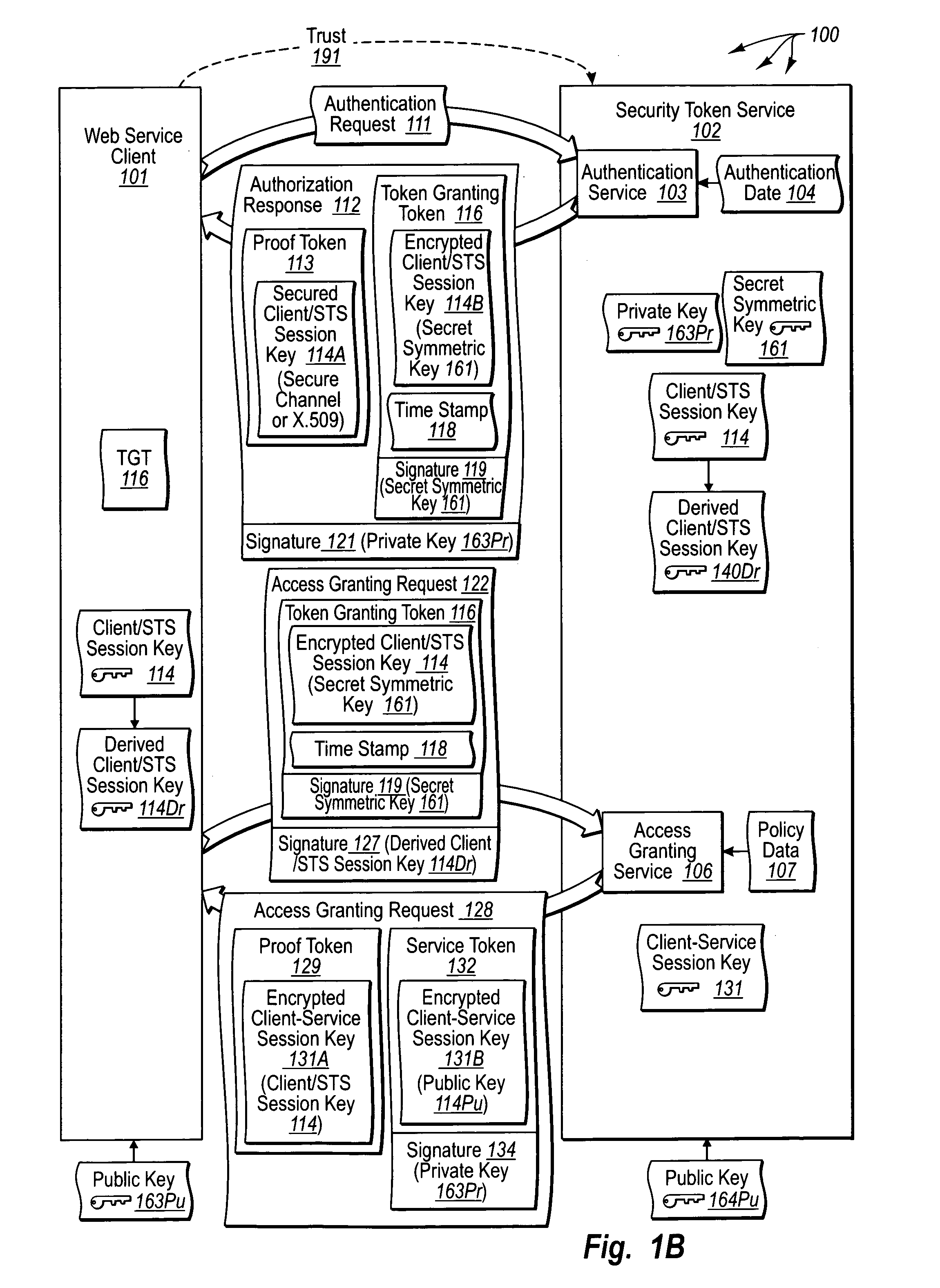Trusted third party authentication for web services
a trusted third-party authentication and web service technology, applied in the field of computerized authentication, can solve the problems of no prescriptive way to describe the different web service specifications, and no mechanism to enforce the security risks of data transfer between web services
- Summary
- Abstract
- Description
- Claims
- Application Information
AI Technical Summary
Benefits of technology
Problems solved by technology
Method used
Image
Examples
Embodiment Construction
[0028] The foregoing problems with the prior state of the art are overcome by the principles of the present invention, which are directed towards methods, systems, and computer program products for trusted third party authentication of Web services. A Web services component sends an authentication request to an authentication service. The authentication service receives the request and validates authentication data contained in the authentication request.
[0029] The authentication service sends an authentication response to the Web services component. The authentication response includes two instances of a first symmetric session key for securing communication between the Web services component and an access granting service. The first instance of the session key is included in a first proof token and secured for delivery to the Web services client. The second instance of the session key is included in a token granting token and encrypted with a secret symmetric key of a security to...
PUM
 Login to View More
Login to View More Abstract
Description
Claims
Application Information
 Login to View More
Login to View More - R&D
- Intellectual Property
- Life Sciences
- Materials
- Tech Scout
- Unparalleled Data Quality
- Higher Quality Content
- 60% Fewer Hallucinations
Browse by: Latest US Patents, China's latest patents, Technical Efficacy Thesaurus, Application Domain, Technology Topic, Popular Technical Reports.
© 2025 PatSnap. All rights reserved.Legal|Privacy policy|Modern Slavery Act Transparency Statement|Sitemap|About US| Contact US: help@patsnap.com



